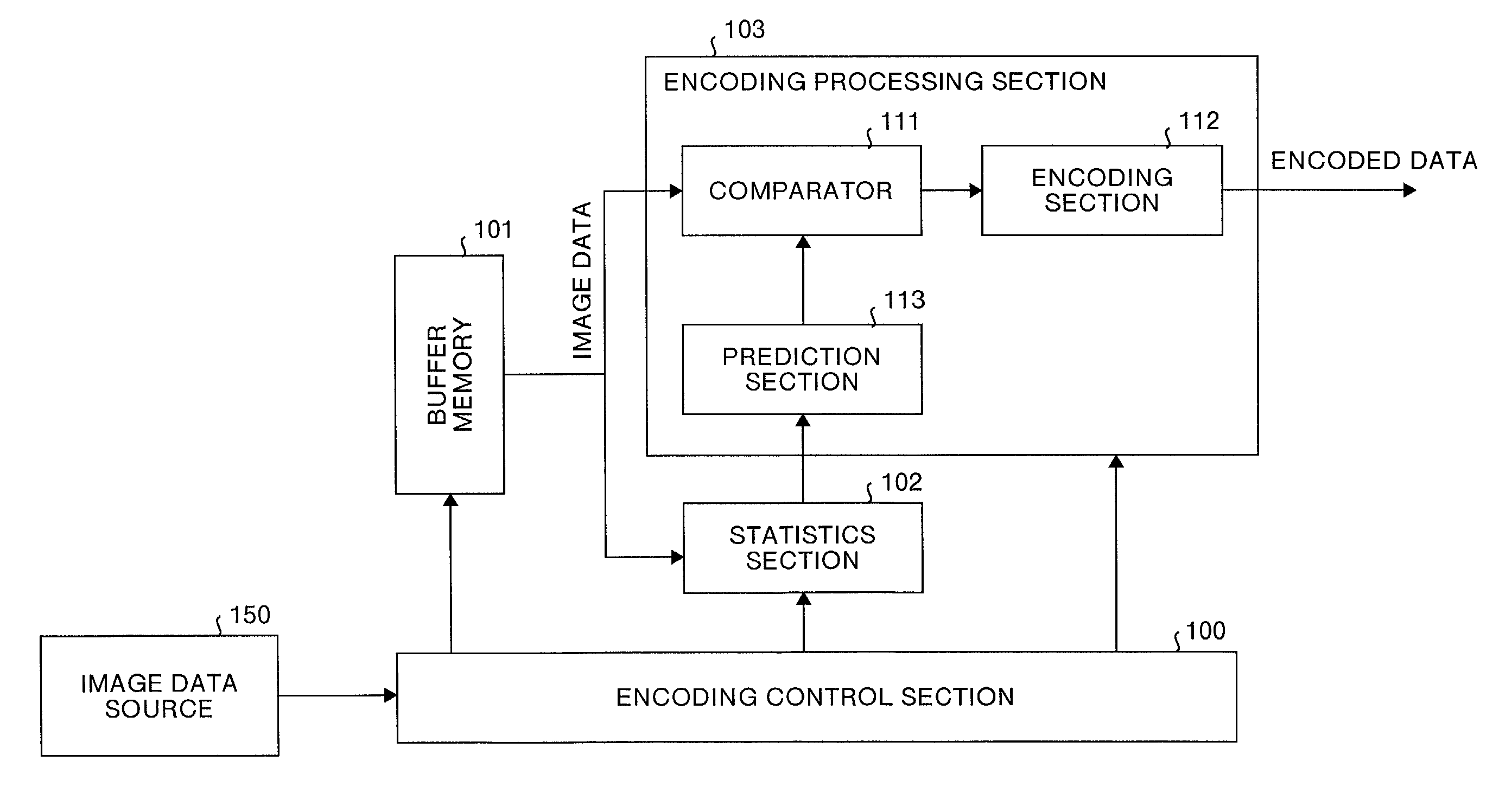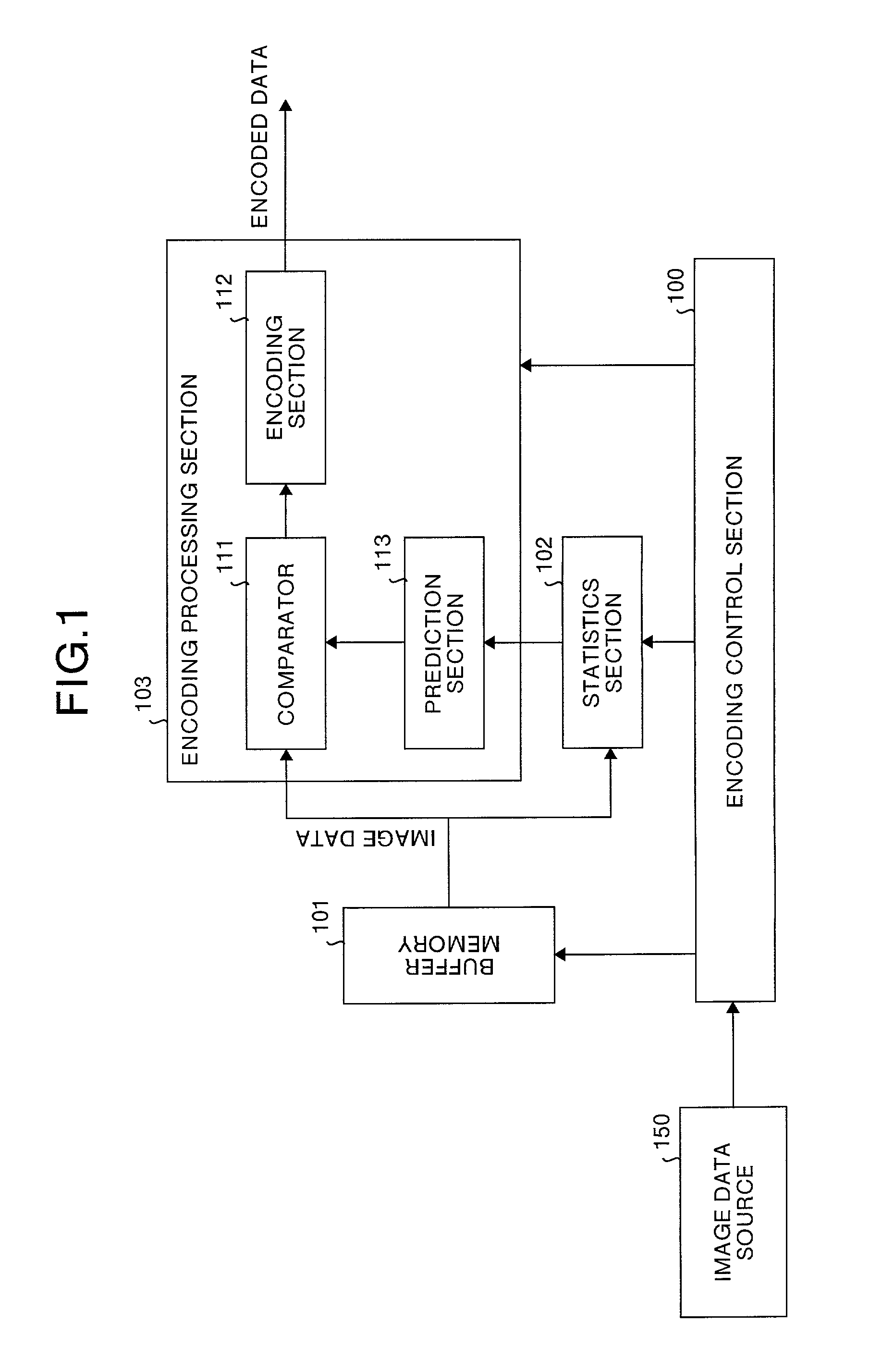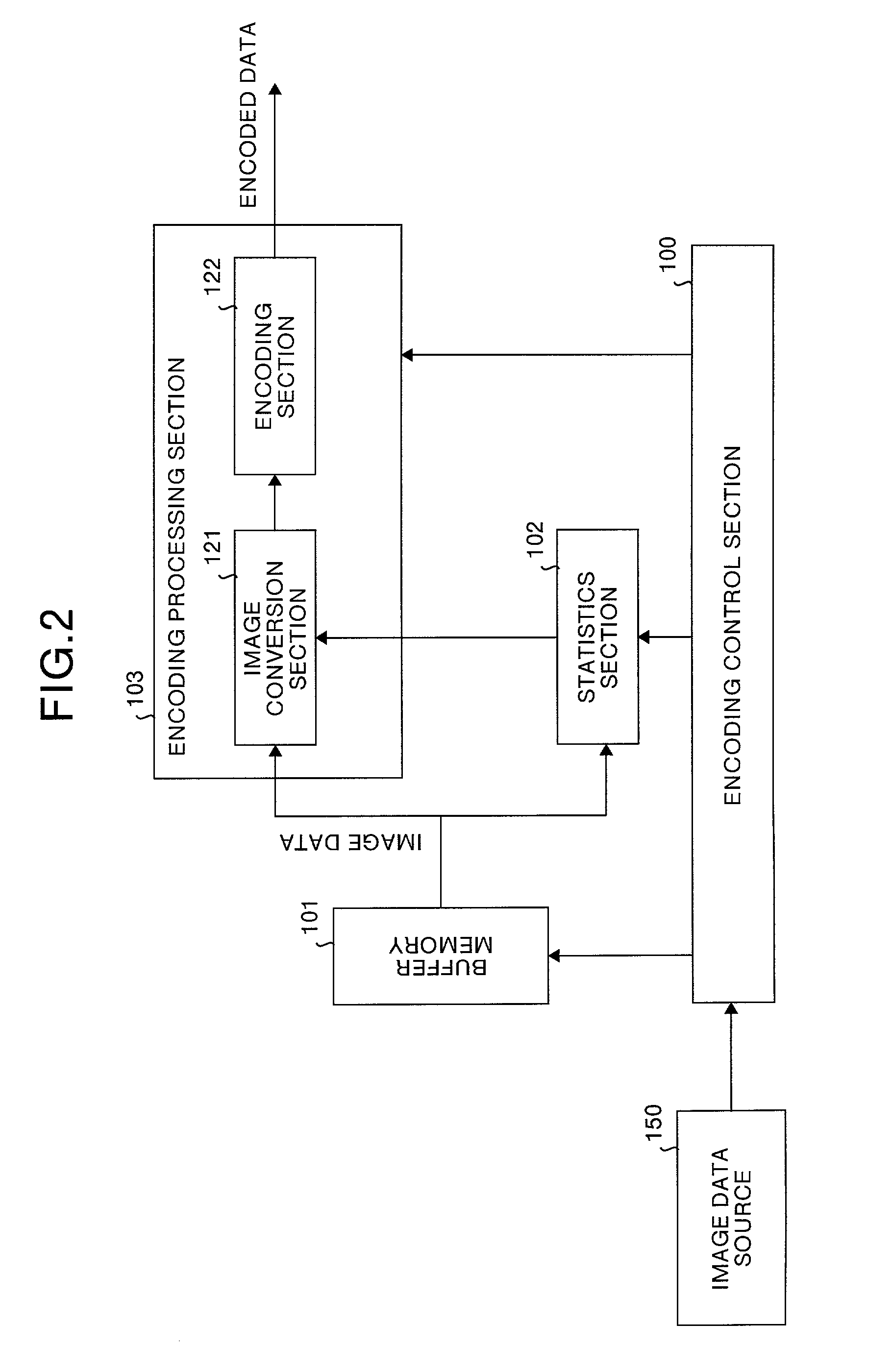Image encoding method and apparatus, image decoding method and apparatus, image processing apparatus, image formation apparatus, and computer-executable programs
- Summary
- Abstract
- Description
- Claims
- Application Information
AI Technical Summary
Benefits of technology
Problems solved by technology
Method used
Image
Examples
first example
[0368]In the first example, as shown in FIG. 69, when the image area A0 of a photograph and the image area A1 of text exist on one page, attention is focused on the point that the size (dither size) of a dither matrix applied to an image in the photograph-image area A0 is different from that of a dither matrix applied to the text-image area A1. For example, the size of the dither matrix applied to the image in the photograph-image area A0 is “4 (dither size of 4×4)”, while the size of the dither matrix applied to the image in the text-image area A1 is “6 (dither size of 6×6)”. The size of the dither matrix (dither size) is then detected from the image after being dithered (dithered image) to separate the photograph-image area A0 from the text-image area A1 in the dithered image.
[0369]FIG. 70 shows the configuration example of an image processing apparatus according to the first example. The image processing apparatus of this first example comprises the dither size detection unit 401...
second example
[0382]The second example realizes image area separation on a dithered image by detecting a dither type in the dithered image when the dithered image has different dither types according to each object (e.g., text object and another object).
[0383]FIG. 74 shows the configuration example of an image processing apparatus according to the second example. The image processing apparatus shown in FIG. 74 comprises the pixel frequency detection unit 4021 that determines a predetermined dither size as one block in a dithered image where dither processing is executed with the predetermined dither size, and detects frequencies of pixel data in a plurality of blocks from the dithered image as pixel frequencies. This image processing apparatus also comprises the dither type detection unit 4022 that detects a dither type based on the pixel frequencies detected by the pixel frequency detection unit 4021, and the separation unit 4023 that performs image area separation on the dithered image based on...
third example
[0399]FIG. 79 shows a configuration example of an image processing apparatus according to the third example. In FIG. 79, the same legends are assigned to the sections corresponding to these in FIG. 74. The image processing apparatus shown in FIG. 79 comprises the pixel frequency detection unit 4021 that determines a predetermined dither size as one block in a dithered image where dithering is executed based on the predetermined dither size, and detects frequencies of pixel data in a plurality of blocks from the dithered image as pixel frequencies. This image processing apparatus also comprises the pixel-frequency distribution generation unit 4031 that generates a pixel frequency distribution from the pixel frequencies detected by the pixel frequency detection unit 4021, and the separation unit 4033 that performs image area separation on the dithered image based on the pixel frequency distribution generated by the pixel-frequency distribution generation unit 4031.
[0400]FIG. 80 shows ...
PUM
 Login to View More
Login to View More Abstract
Description
Claims
Application Information
 Login to View More
Login to View More - R&D
- Intellectual Property
- Life Sciences
- Materials
- Tech Scout
- Unparalleled Data Quality
- Higher Quality Content
- 60% Fewer Hallucinations
Browse by: Latest US Patents, China's latest patents, Technical Efficacy Thesaurus, Application Domain, Technology Topic, Popular Technical Reports.
© 2025 PatSnap. All rights reserved.Legal|Privacy policy|Modern Slavery Act Transparency Statement|Sitemap|About US| Contact US: help@patsnap.com



